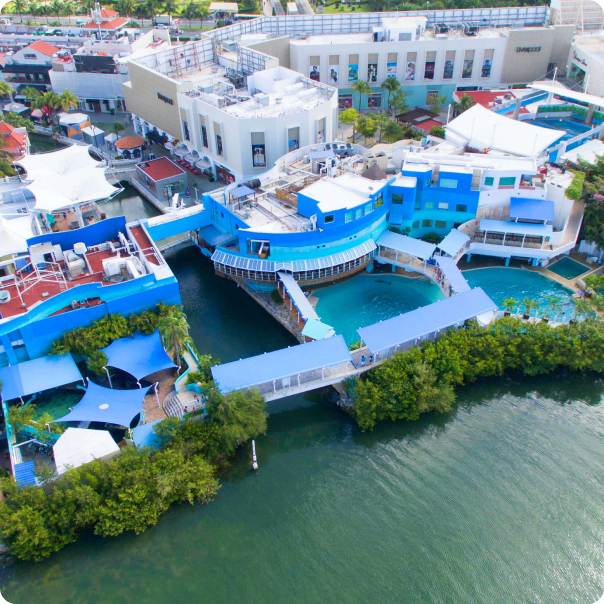Meet our marine invertebrates
At the Interactive Aquarium Cancun you will discover a unique way to interact with marine invertebrates in the interactive ponds area. Here visitors can carefully see and touch echinoderms including: starfish, sea urchins and sea cucumbers.
- Black sea urchin
- Black sea urchin
- Donkey dung sea cucumber
- Giant Caribbean sea anemone
- Red cushion sea star
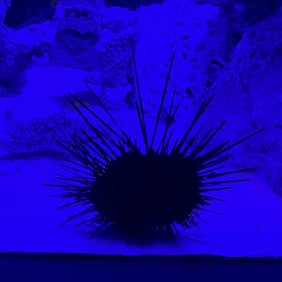 Black sea urchin
Black sea urchin
Diadema antillarum
It is a round sea urchin that reaches sizes of up to 50cm in diameter. It has thin spines that vary between 30 and 40 cm in length. The spines are thin, hollow and easy to break.
At the base of the urchin there are branched tentacles called tube feet, which help in food gathering, breathing, movement and reproduction.
They reproduce during the summer, with eggs and sperm being released once every lunar month.
Facts & information
- Diet: Seagrasses and algae
- Size: They can grow up to 30 cm
- Life expectancy: 6 years
- Conservation status: Not evaluated
Did you know that?
D.antillarum cleans coral reefs by feeding on algae, leaving space for coral larvae to settle and grow. However, the sea urchin also erodes the coral’s calcium carbonate.
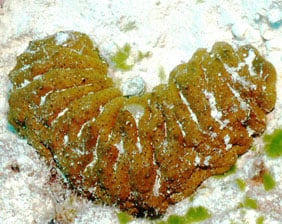 Donkey dung sea cucumber
Donkey dung sea cucumber
Holoturia mexicana
These animals have an elongated body, they can measure between 2.5 and 180 centimeters and their diameter is around 25 centimeters. The sea cucumber lives in shallow salty waters around coral reefs. Its skin can be brown, black or olive green, with bone particles and a leathery texture.
Facts & information
- Classification: Invertebrate / Echinoderm
- Diet: Detritivores and omnivores, sea cucumbers consume sediment and organic debris with the tentacles around their mouth
- Size: Many sea cucumber species measure around 180 cm in length; the smallest holothurias do not exceed 3 cm
Did you know that?
It can process around 120 grams of sediment per day, which represents 44 kilograms per year.
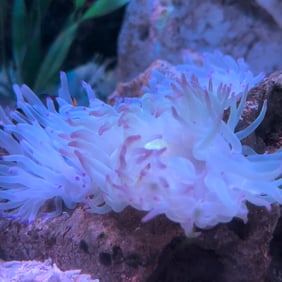 Giant Caribbean sea anemone
Giant Caribbean sea anemone
Condylactis gigantea
The giant Caribbean anemone has a cylindrical body with a mouth at its center surrounded by around 100 or more long tentacles which have rings of pink, purple, blue or green at the tips. The body can be of different colors, including pink, white, light blue.
Its main mating season is spring, but it tends to continue reproducing at slower rate throughout the year.
Facts & information
- Distribution: It is found in the West Indies and in the western Atlantic. In Mexico it is distributed along the coasts of Quintana Roo and Cozumel
- Diet: Fish, mussels, shrimp
- Size: it grows to approximately 15 cm high and 30 cm wide
- Conservation status: Not evaluated
Did you know that?
They form symbiotic relationships with microalgae called zooxanthellae. These algae benefit by finding a safe place and exposure to sunlight while the anemone receives oxygen and food from the algae's photosynthetic byproducts.
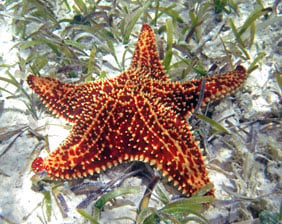 Red cushion sea star
Red cushion sea star
Oreaster reticulatus
The Asteroidea class is composed of around 1,800 existing species that are distributed around the world's oceans, including the Atlantic, Pacific, Indian, Arctic and Antarctic. They generally have a central disc and five arms, although some species can have many more arms. They have tube feet that are operated by a hydraulic system and a mouth at the center of the oral surface or lower part of the surface.
For many years, these starfish have been dried or painted with bright colors to be sold on the beach as decorative objects. As a result, they are now considered as a rare species in some places where it used to be common to find them. They are found in waters from 0 to 69 meters deep.
Facts & information
- Classification: Invertebrate / Echinoderm
- Diet: Omnivore. Starfish feed on a wide variety of organisms such as sea urchins, fish, worms, grubs, micro algae, etc
- Size: They can grow up to 50 centimeters
Did you know that?
Starfish are able to regenerate amputated limbs
